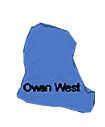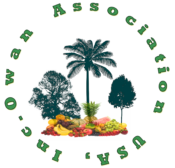Iuleha clan occupies the north-western part of Edo State in the Southern geopolitical zone of Nigeria. Iuleha is the single largest conglomeration of community in the Owan West Local Government Area of Edo State, in terms of size and population. Iuhela has continued to play a vital role in the socio-political, cultural and economic development of the local government area.

Like many other clans and subclass in the area, the development of Iuleha’s history was highly motivated and influenced by the market rings, ancestral figures and age-grade celebrations. These factors were very important as unifying elements among the various villages or communities that make up Iulehaland.
Historically, the foundation of Iuleha community relates to one Irimo who’s believed to have had a Yoruba ancestry. For instance, Ife and Ijebu-Ode sometimes feature in the discourse relating to the origin of Irimo. The work contends that the three cultural elements acted as major forces that help to build bonds of kindred identities as Eruere, Aoma and Okpuje that make up the Iuleha clan. Iuleha markets are scheduled and organized according to seniority positions of each community as well as when festivals are held to reflect the position of each community.
THE ROLE OF MARKET RINGS IN THE UNIFICATION OF IULEHA COMMUNITIES
Iuhela Markets was structured to accommodate the role of culture in the scheme of things in the various communities. Although Iuleha markets were organized to the demands of each community where the markets were located, the arrangement was such that the community ties were encouraged to relate with one another, in appreciation of their kinship and ancestral connections.
This development can be traced to the beginning of colonialism in Owan when the people were subjected and subjugated to the dictate of colonial rules. For instance, the idea of raising revenue through collection of levies from the people made it imperative for those charged with the responsibility of raising revenue for the colonial government to seek ways of revenue generation and market became a veritable means of actualizing their demands. There are indications that Yoruba communities of Idoani, Ogbese, Ukaro, Ifon (Ikhan), Ikpele, Owo and others had been trading with the people of Iuleha long before the introduction of colonial rule. The routes for this contact were mostly through Uzebba-Ukaro-Ifon footpath, across the Ose River; the Okpuje-Ikpele footpath and Eruere-Idoani footpath. These interactions brought such goods such as beads name (Ikpele by Iuleha people) different textile materials, household wares such as earthen pots, wooden spoons, calabashes, farm produce and domestic animals were exchanged between the people.
The two world wars provided an opportunity for increase socio-economic interactions between Iuleha people and their Yoruba neighbors. During the era of legitimate trade in the late nineteenth century, some Igbo traders in present day Delta Igbo land, west of the Niger, came to Iuleha to trade in palm kernels and other forest and agricultural products. These interactions witnessed a boom after the Nigerian Civil War (1967 – 1970) and by 2000; the Igbo elements had overtaken their Yoruba counterparts in the area of trade and commercial activities in Iuleha.
Markets in Iuleha had a number of functions that includes socio and political interactions where kings or chiefs used the opportunity of gathering in the market place to address the people, most of who were women on latest development in respect of the welfare of the community and the people. No single community was at a liberty to fixing markets in such a way as to clash or conflict with markets elsewhere in the Iuleha clan. Markets dates are fixed to favor traveling merchants who move from place to place displaying their commodities. These trading interactions of traders developed into marriage relationships with people outside their immediate communities. As such, we can say that the operations of market rings encouraged socio-cultural and economic integration in Iuleha clan. This role was not limited to market operations. Ancestral figures are connected directly or indirectly to socio-economic activities that served the purpose of unifiers.
ANCESTRAL AND CULTURAL FIGURES AS UNIFYING FACTORS
Ancestral figures represented another medium of integration among Iuleha people as unifying or rallying grounds for interaction.
An interesting aspect of Iuleha history is the seniority held position of the community. Eruere for example has been challenged and exposed to scrutiny on the ground that, unless unusual circumstances associated with soil or trade intervene, it is natural that an old village would be larger than is the case of Eruere with a neighbors of more than dozen communities. Based on this thinking therefore, Okpuje and Eruere were founded much later than Aoma.
The ancestral figure of Obazua is well entrenched in the historiography of Aoma people because of the festival that is organized annually in his honor. Obazua is believed to be a Benin noble and hunter who accompanied Irimo on his way to Iviosakon. Contrary to Omo-Amu’s claim, there is no evidence to suggest that Obazua, in whose honor the festival of Obazu is celebrated, was the founder of Iuleha. The point is that, the event could have been a convenient way and method of explaining the hunting exploit of Obazua and his ability to hunt successfully numerous buffalos. This article does not intend to discuss the instrument used in the celebration of the Obazu Festival because of the taboo associated with it. Suffice to say that the festival has remained a sacred institution and tradition among the Aoma people. Not long before his death, Obazua instructed Aoma to immortalize his name (Obazua) hence the celebration of Obazua festival by Aoma male members of the community. A clue from this festival may shed light on the possibility of different mothers among the three sub-clans of Iuleha. Up until today, the festival of Obazu is celebrated by all the villages in Aoma to commemorate the ancestral figure of Aoma. Thus, through this means, the people of Uzebba, Avbiosi and Ogbagun (comprising of Ivbiughuru, Ukhuse-Oke, Ukhuse-Osi. Obola, and Okagboro) see themselves as belonging to the same family tie by virtue of their celebration of Obazu Festival.
FESTIVALS AS A CENTRAL-POWER IN IULEHALAND.
Iuleha clan paid special attention to festivals as part of their socio-cultural organization. Several festivals were organized in the communities of Iuleha at different periods of the year. In Ereure sub-clan, the people celebrated annually the Era-Eruere, which literally means “father of Ereue”, to commemorate the ancestral figure of their progenitor.
The Okpuje sub-clan celebrated different festivals, but that of Okpujero was the most prominent. Like Era-Ereure, the people of Okpuje referred to the Okpujero as a celebration meant to celebrate their ancestor. For this reason, it was celebrated every year and restricted to male members of society. Unlike the Obazu Festival, females were free to watch Okpuje-ro, but were restricted in certain aspects of the festival. They could also dance to the music of the festival and assist the male folk in entertaining visitors to the festivals. It was a sort of tourist attraction to the people and largely helped to unite the various communities of Okpuje. The people of Aoma had Obazu as their festival of unity celebrated in honor of the legendary Obazua. The festival attracted males from both within and outside Iuleha clan. Unlike the Okpuje-ro, it was celebrated in each community of Aoma but initiates could visit their counterparts in other communities of Aoma during the festival, provided such arrangements did not expose them to females.
At the community levels, festivals were also organized to reflect the unity of the people. Both Oghare and Iovbode represented the biggest festivals that helped to unite both the male and female members of the Iuleha clan. Male members of the clan celebrated the Oghare every four years. On the other hand, Iovbode embraced both male and female members of the clan and took place every four years, precisely every leap year. Both festivals were celebrated to commemorate attainment of manhood. They also served as initiation ceremonies. Each community celebrated its own but it was normally between October and December, beginning with Avbiosi and ending with Okpuje in the market arena as the final get-together meeting place .
IULEHA AND THE SURROUNDING VILLAGES:
Uzebba, Avbiosi new/old, Obi camp, Eruere, Okegho, Okpuje: Ikpayan, Avbiognula, Iloje, Ivbiodohen, Iveleke, Oah, Iloje, Ogbagun: Obola, Okagboro, Oviokhua, Ukhuse-Osi and Ukhuse-Oke.
